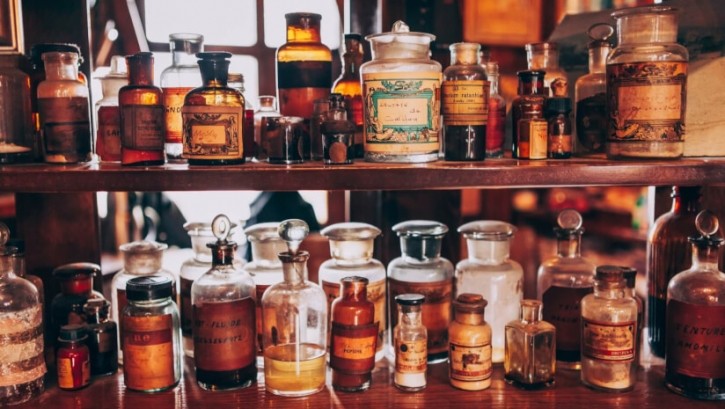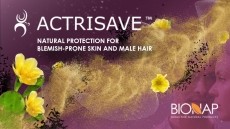A look back at the OTC botanical drug route: How phytomedicine became dietary supplement

It was also the year a group of European and American phytomedicine manufacturers petitioned the Food and Drug Administration to facilitate the entry of products into the U.S. market as over-the-counter botanical drugs. This effort, however, met with inaction, and not long after botanicals were inked into the definition of dietary supplements.
“It was a time in history when the Europeans were ahead of the Americans, and we had much more research in this field,” said Jörg Grünwald, then medical director at German OTC drug manufacturer Lichtwer Pharma. “We had the better products, we had standardized, regulated herbal drugs, and we had a monograph system which regulated everything, and the Americans had no legislation at that time.”
Lichtwer would introduce its Kwai garlic tablets in an unregulated U.S. market in January 1992 pending a legal route that would allow the company to harness its extensive clinical data to communicate cholesterol-lowering and potential anti-atherosclerotic effects of its standardized garlic powder.
The trajectory of phytomedicine in the U.S.
Writing in a 1996 volume of Pharmacy in History, Varro E. Tyler—who is remembered as one of the leading authorities on herbal medicine (and a philatelist who specialized in the study of forged postage stamps)—revisited the history of botanical medicine in the United States from the vantage point of the 1990s.
He charted the trajectory of plant drugs from heyday in the early 1900s through near extinction in the second third of the century and on to the “beginning of a renascence that was to provide new growth and new significance to the field.”
By 1906, the third edition of the National Formulary—which detailed standards for excipients, botanicals and other similar products and was later purchased by the U.S. Pharmacopeia—listed 289 plants and their preparations, representing nearly half of the monographs in the volume. Dr. Tyler, however, noted that the credibility of botanical drugs had become threatened by a proprietary medicine industry that advertised the utility of phytomedicine in a “hyperbolic fashion.”
“The outrageous and unproven claims of efficacy made by the so-called patent medicine vendors alienated many physicians,” he wrote. “Even after the advertising was toned down following implementation of the Food and Drugs Act of 1906, the prejudice of many medical doctors against plant drugs not only continued but actually intensified."
Aside from concerns over efficacy, there was also an economic disincentive—given that many of these drugs were not patentable due to their long history of use as traditional medicine and could not compete with new synthetic compounds that provided pharmaceutical manufacturers with a more certain and exclusive path to profitability.
“Botanicals were abandoned, not because they were necessarily unsafe or ineffective—after all, until 1962 the kind of random, controlled, double-blind, crossover, clinical studies we utilize today were seldom employed—but because they were unprofitable,” Dr. Tyler wrote.
The downturn had also impacted plant drug research and curriculums, which found themselves relatively unfunded and therefore stagnant and untaught. By 1960, however, there were indications of a revitalization of pharmaceutical botany with the establishment of The American Society of Pharmacognosy and its Lloydia journal (which became the Journal of Natural Products), the isolation of plant compounds for chemotherapy and the introduction of more sophisticated analytical tools like nuclear magnetic resonance spectroscopy and mass spectrometry.
In the same 1996 Pharmacy in History volume, Mark Blumenthal, founder and executive director of the American Botanical Council (ABC), juxtaposed the marginalization of herbal medicine as “alternative” medicine in the United States and the rapidly growing consumer demand for herbal products from the 1960s on—leading to their “absorption into mainstream lifestyles […], evidenced by their reintroduction into pharmacies” throughout the country.
Meanwhile, phytomedicines had become established as products of sophisticated drug regulatory systems in Europe, supported by considerable research and development. They existed in a thriving market where they accounted for close to $6 billion in retail sales, were accepted as a lucrative part of the mainstream pharmaceutical industry and benefitted from holding a fair share in the drug reimbursement system for the time being.
The EAPC petition of 1992
In 1986, the companies that would make up the European-American Phytomedicines Coalition (EAPC) had their first collective meeting with Loren Israelsen, who as general counsel for Nature’s Way (1980 to 1990) had been traveling Europe connecting with botanical drug manufacturers as strategy to expand the company’s portfolio with products backed by rigorous scientific research and quality assurance.
Since the U.S. regulatory environment was not equipped to provide access for OTC botanical drugs from overseas, Israelsen proposed to work with FDA to establish a suitable path to market. It was also around this time he began working on hatching a parallel route that would protect consumer access to and create a regulatory framework for dietary and herbal supplements in the face of another looming FDA clamp down around claims.
“I told the European companies that we were prepared to take on two strategies—establishing botanicals in the OTC drug monograph review process and also separately create a category of dietary supplements through legislation,” Israelsen said. “So, we already knew at that time we were probably going to end up having to deal with Congress on the dietary supplement side in parallel, and most of the industry didn't know anything about EAPC.”
On July 24, 1992, the EAPC filed its 29-page umbrella petition with FDA, requesting that policy consider phytomedicines with a long and safe history of use as nonprescription drugs in Western Europe for entry into the U.S. market. Specific data and scientific information would be filed later in select botanical petitions.
The coalition members from France, Germany, Israel, Italy, the Netherlands, Switzerland, the United Kingdom and the United States included Bioforce, Boehringer-Ingelheim, Botanicare Natural Products, Dr. William Schwabe, Indena, Institut Henri Beaufour, Lichtwer, Madaus, Murdock International, Pharmaton and R.P. Scherer.
“[They] would like to have their products regulated as drugs because they have dealt in that milieu and this is something they're most comfortable in," EAPC co-counsel Robert Pinco, a partner in the Washington, D.C. law offices of Baker & Hostetler, reportedly told FDA representatives at a feedback meeting three months later.
Pinco, a registered pharmacist, had served as director of the division of OTC drug evaluation in the Bureau of Drugs at the FDA in the 1970s. He was also good friends with Jerry Halperin, who was the president of the U.S. Pharmacopeia (USP), which would be crucial in the process for establishing standards to create the OTC monographs that would be required.
In 1972, FDA established the OTC Drug Review to regulate OTC products through a system of monographs that would establish the conditions under which such drugs would be generally recognized as safe and effective (GRAS/E) and not misbranded. This system, however, was limited to drug products with U.S. marketing experience prior to 1972, thus excluding foreign products.
“FDA's refusal to accept foreign marketing data has impacted adversely many foreign companies—companies that sell their products in countries that have sophisticated regulatory systems comparable to FDA's OTC Drug Review,” Pinco noted in a 1998 issue of the Food and Drug Law Journal. “As a result of FDA's unwillingness to include foreign marketing history, U.S. consumers are denied access to safe and effective ingredients that have been used extensively throughout the world.”
The petition also argued that the exclusion of foreign products was an “arbitrary and capricious disregard of the plain language of section 201(p) of the FDCA,” a position “further supported by Fmali Herb Inc., v. Heckler (1982), which “stands for the broad principle that marketing outside the U.S. may be used to document safety of various ingredients.”
The EAPC suggested regulations that would define the material time and extent of use of botanical drugs as at least five years on the market and retail sales of 10 million dosage units. Material time and extent shift a product from having to meet expensive and extensive requirements of a new drug application (NDA) into the OTC drug review process.
In a 1992 article published in the American Botanical Council’s HerbalGram addressing the desirable prospect of an OTC drug category, Blumenthal explained that the NDA review process—requiring tests and costs of up to $200 million—is geared primarily to mono substances, molecular entities that are developed for prescription use.
“Phytomedicines, on the other hand, contain either whole herb material, an extract of an herb, or a ‘standardized’ extract of an herb (where one or more naturally occurring component is guaranteed to be present at a consistent level),” he wrote, noting that it is nearly impossible to test for each individual ingredient in a phytomedicine.
The EAPC also argued that FDA failure to consider foreign data and marketing experience from countries with advanced systems violated the 1947 General Agreement on Tariffs and Trade (GATT) and the Technical Barriers to Trade (TBT) Agreement and therefore constituted unlawful discrimination in favor of domestic drug manufacturers “for no legitimate reason.” It proposed that demonstration of safety-in-use should include market authorization in at least one drug export country listed in the Drug Export Amendments Act of 1986.
“International law and harmony, as well as public policy dictate that FDA not create an artificial barrier to the inclusion of useful, safe and effective ingredients in the OTC Drug Review,” the petition read.
The right to make botanical health claims
One of the main sticking points of the time was the right to make botanical health claims (the relationship between a substance and a disease)—a right reserved for drugs but more aligned with traditional use.
In 1990, the Nutrition Labeling and Education Act (NLEA) made way for regulations on the use of health claims, establishing that they must be reviewed by the FDA through a petition process. Approval of a claim requires significant scientific agreement (SSA) among qualified experts to confirm that it is supported by the totality of publicly available scientific evidence for a disease/nutrient relationship. This route did not extend to botanicals, however, as the agency communicated in subsequent rulemaking that proposed to treat botanicals as non-nutrients.
Garlic was one phytomedicine that quickly worked itself into the zeitgeist of the 1990s, with garlic pills appearing as staple of European and by extension U.S. medicine cabinets. In the U.S. market, Lichtwer competed against Wakunaga’s science-backed Kyolic Aged Garlic Extract and Kyo-Chrome Aged Garlic Extract but also against a wide variety of dosage forms, some of which lacked the ability to yield the active compound allicin following consumption and were of doubtful efficacy, according to Dr. Tyler.
An article titled “After Granola, What? Lichtwer's Little Garlic Pills?” published in The New York Times on April 5, 1992 reported that health food retailers and garlic pill manufacturers were logging soaring sales of between 50% and 100% within the previous year. This included placements in mass merchandisers and supermarkets like Walmart, A&P and Walgreens and heavy investments to introduce the products into the United States. Both Lichtwer and Wakunaga ran coupon ads in health-related magazines including American Health, Better Nutrition, Longevity, Prevention, Shape and Vegetarian Times.
“[Lichtwer] spent $4.5 million advertising its Kwai Highly Concentrated Garlic Tablets in the United States last year,” wrote NYT reporter Eben Shapiro. “With an $8 million advertising budget for 1992, Lichtwer put its Kwai pills on the network evening news shows in January.”
The other in demand botanicals in the U.S. market at the time included echinacea, garlic, goldenseal, ginseng, ginkgo, saw palmetto, aloe gel, ephedra, eleuthero, cranberry, feverfew, milk thistle, St. John’s Wort and valerian—most of which owed their popularity to European research.
At the initial 1992 petition feedback meeting, Pinco estimated that the coalition would present 10 to 15 substances for review over the next few years.
OTC drug route loses momentum, onward with DSHEA
Israelsen recounted that one of the most promising botanicals early on in the process was saw palmetto for enlarged prostate (BPH).
“The reason is that there was no approved drug RX for BPH up to that point, it was a growing health concern, and the data was quite good,” he said. “Then, and I think unbeknownst to the OTC drug staff, it emerged that there was a new drug advancing through FDA—Merck's Proscar that was scheduled to be approved.”
When Israelsen flew to Washington D.C. with high expectations that saw palmetto would be a strong candidate for Category I (generally recognized as safe and effective for the claimed therapeutic indication) OTC drug status, he was instead informed by an FDA Public Health Service official that the Office of New Drugs had caught wind of the OTC drug effort.
“And he said, ‘That is not happening, we are not going to approve a new drug and an OTC at the same time. We do not do that. We've never done it. We're never going to do it. It's a new drug first, and then if anybody wants to come in and do a Rx-to-OTC switch, that process is available’,” Israelsen said.
Merck’s new drug had been approved on June 19, 1992 after a 14-month review.
That same month, Senator Orrin Hatch introduced the Health Freedom Act, which Bill Clinton signed into law on Oct. 25, 1994 as the Dietary Supplement Health and Education Act (DSHEA). Here, botanicals were now regulated as part of the legal definition of dietary supplements, exempted from pre-market approval, excluded from drug status and allowed to make structure-function claims, even if these did not reflect their traditional use.
With little-to-no movement on the umbrella petition since filing two years prior, the EAPC submitted a 24-page petition for valerian as sleep aid in 1994, hoping that a specific request would speed up FDA consideration of the policy change. This was followed by a 31-page petition filed on May 26, 1995 for ginger as antiemetic for the prevention of nausea and vomiting. Both of these also languished in process.
"The issues raised by the EAPC are important policy considerations which deserve a thoughtful and affirmative response from FDA,” Israelsen is quoted as saying in the Fall 1995 HerbalGram issue. “We have tried to frame the problem and the solution squarely, and FDA's silence is not only disappointing but gives support to the industry's belief that the agency remains inflexible and unresponsive.”
Although efforts were not fully abandoned, the interest in advancing the OTC monograph approach had diminished to the point that there were no longer the resources to carry on, Israelsen said. The energy and enthusiasm were refocused on the new easier route to market, where the EAPC companies could support structure-function claims with their ‘best-in-class’ scientific evidence.
“In the end, I think it was a very good decision to go for the dietary supplement and not for the drug route because the drug route is much more expensive, totally bureaucratic and hinders innovation,” Grünwald said, although he acknowledged that the OTC drug category would have provided more rigorous quality controls.
The American Herbal Products Association and Plantaphile contributed source documents for this report.

















